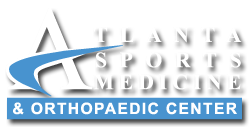Total Shoulder Arthroplasty/Hemiarthroplasty Protocol
 The purpose of our protocol is to provide the physician and therapist with a GUIDELINE of the postoperative therapy course after TSA or HHR. If the clinician or therapist has any questions, please consult with the referring surgeon.
The purpose of our protocol is to provide the physician and therapist with a GUIDELINE of the postoperative therapy course after TSA or HHR. If the clinician or therapist has any questions, please consult with the referring surgeon.
If additional procedures have been performed, please consult the referring surgeon. This is especially true in patients that have undergone rotator cuff repair, subscapularis augmentation with pectoralis major, revision settings, and patients with bone grafting. These patients are progressed to the next phase based on clinical exam and not length of time from surgery.
Phase I – Immediate Post Surgical Phase:
Goals:
• Allow surgical inflammation to subside and allow healing of soft tissue
• Gradual improvement in passive range of motion (PROM) of shoulder. Allow gentle active range of motion (AROM) of elbow/wrist/hand
• Decrease muscular inhibition
• Gradual return to activities of daily living (ADLs) with assistance
Precautions:
• Sling for 3-4 weeks at all times except for shower
• When lying supine, place small pillow under elbow to prevent shoulder extension. This will decrease tension on anterior structures, principally the subscapularis. The patient should always be able to see their elbows.
• NO shoulder AROM, lifting, pulling, pushing
• NO internal rotation or sudden external rotation
• NO shower for 5 days, sponge bath only – keep incision clean and dry
• NO soaking of wound (bath, Jacuzzi, swimming pool)
• No driving until sling removed
Postoperative Day (POD) #1-2 (in hospital):
• Physical therapy with following limits: passive forward flexion in supine to tolerance, ER to 20-30 degrees (don’t force ER), IR to chest, AROM of elbow, wrist, hand (don’t force elbow extension as patients usually have had a biceps tenodesis at the time of surgery)
• Pendulum exercises
• Recommend use of cryotherapy for pain, swelling, and inflammation
Phase I (0-6 wks):
Continue previous exercises
• Continue to progress PROM as motion allows following limits of surgeon
• Begin assisted flexion, elevation in the plane of the scapula, ER, IR in the scapular plane at 4-6 weeks
• Progress active distal extremity exercise to strengthening as appropriate
If patient has not progressed with motion, DO NOT perform forceful stretching and mobilization/manipulation of tissue and joint. Rather, continue with gradual ROM and gentle mobilization (i.e. Grade I oscillations).
Patient may progress to next phase when
• Able to tolerate PROM program
• Has achieved at least 90° PROM forward flexion and elevation in the scapular plane.
• Has achieved at least 45° PROM ER in plane of scapula or limit determined by intraoperative measurement
• Has achieved at least 70° PROM IR in plane of scapula measured at 30° of abduction
Phase II – AROM (6-10 weeks):
Goals:
• Restore full passive ROM
Gradually restore active motion
• Do not overstress healing tissue
• Re-establish dynamic shoulder stability
Precautions:
• Sling used only for sleeping, discontinued by week 8. Place pillow behind elbow so patient can see elbow at all times
• No lifting, pushing, pulling (empty tea cup is maximal weight)
• No supporting of body weight by hand on involved side
Early Phase II:
• Focus on PROM and AROM in scapular plane continue with PROM, active assisted range of motion (AAROM)
• Scapular strengthening exercises as appropriate
• Begin assisted horizontal adduction
• Progress distal extremity exercises with light resistance as appropriate
• Gentle glenohumeral and scapulothoracic joint mobilizations as indicated
• Initiate glenohumeral and scapulothoracic rhythmic stabilization
• Continue use of cryotherapy for pain and inflammation.
Late Phase II:
Progress scapular strengthening exercises
Patient may progress to next phase:
• Minimal pain
• Has achieved at least 140° PROM forward flexion and elevation in the scapular plane.
• Has achieved at least 60+° PROM ER in plane of scapula, 70 degrees IR in 30 degrees of abduction
• Able to actively elevate shoulder against gravity with good mechanics to 100°.
Phase III – Early Strengthening (10-14 weeks):
Goals:
• Gradual restoration of shoulder strength, power, and endurance
• Optimize neuromuscular control
• Gradual return to functional activities with involved upper extremity
Precautions:
• No heavy lifting of object greater than 5 lbs.
• No sudden lifting or pushing activities
Early Phase III:
• Continue motion exercises, may start to improve IR
• Resisted shoulder IR, ER in scapular plane
• Begin progressive supine active elevation strengthening (anterior deltoid) with light weights (1-2 lbs) at variable degrees of elevation
Late Phase III:
• Resisted flexion, elevation in the plane of the scapula, extension (therabands / sport cords)
• Continue progressing IR, ER strengthening
• Progress IR stretch behind back from AAROM to AROM as ROM allows
(Pay particular attention as to avoid stress on the anterior capsule.)
Phase IV – Advanced strengthening (>14 weeks):
Goals:
• Maintain non-painful AROM
• Enhance functional use of upper extremity
• Improve muscular strength, power, and endurance
• Gradual return to more advanced functional activities
Please note patients with Rheumatoid Arthritis, fractures, and other pathology will have different criteria for progression to the next phase. Their disease processes may limit gains when compared to other patients.
Protocol modified and used with permission from BWH Sports/Shoulder Service.
